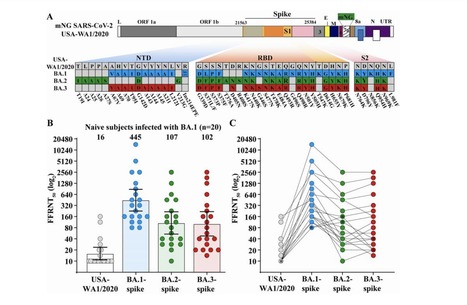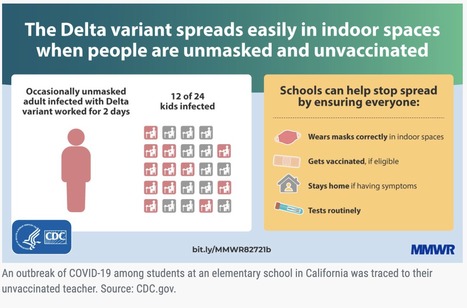Half of the elementary school students in an unvaccinated teacher’s classroom developed COVID-19 after the teacher — infected and symptomatic — worked for 2 days and read to the students while not wearing a mask, according to researchers. The exposures led to a larger outbreak at the California school in May that was associated with the delta variant, with many cases occurring among children not eligible for vaccination, illustrating a continued need for nonpharmaceutical prevention strategies during the pandemic, the researchers wrote in MMWR. The outbreak location was an elementary school in Marin County, California, which serves 205 students in prekindergarten through eighth grade, with most students unable to receive the vaccine to due age limits. The school was also reported as having 24 staff members, with all but two of the teachers being vaccinated. One of the two unvaccinated teachers, whom the study identifies as the index patient, reported becoming symptomatic on May 19, having attended social events the previous few days without any known COVID-19 exposures. “The teacher continued working during May 17-21, subsequently experiencing cough, subjective fever, and headache,” the researchers wrote. “The school required teachers and students to mask while indoors; interviews with parents of infected students suggested that students’ adherence to masking and distancing guidelines in line with CDC recommendations was high in class. However, the teacher was reportedly unmasked on occasions when reading aloud in class.”
On May 23, the teacher notified the school that they had tested positive for COVID-19 on May 21 and self-isolated until May 30. The study said the teacher did not receive a second COVID-19 test but reported fully recovering during isolation. “The index patient’s students began experiencing symptoms on May 22,” the study said, and 22 of the teacher’s 24 students were tested for COVID-19, with 12 testing positive, including eight who began having symptoms between May 22 and 26. According to the researchers, desks in the classroom were separated by 6 feet and arranged in five rows. The attack rate was higher the closer students sat to the teacher’s desk — eight out of 10 students sitting in the first two rows tested positive vs. three of 14 in the back three rows. On May 26 and June 2, the Marin County Department of Public Health held testing events at the school as part of outbreak control. During these 2 days, 231 people were tested, including 194 of the 205 students, 21 of 24 staff members and teachers, and 16 parents and siblings of students. A total of 18 people tested positive for the delta variant at the time, and five more tested positive later on. The study’s authors said further transmission might have been prevented by high levels of community vaccination — at the time of this outbreak, approximately 72% of eligible individuals in the city where the school is located were fully vaccinated.
“In addition to vaccination of eligible persons, implementation of and strict adherence to multipronged nonpharmaceutical prevention strategies including proper masking, routine testing, ventilation, and staying home while symptomatic are important to ensure safe school instruction,” the study said. With school set to return in the coming weeks in many areas of the country, the CDC is encouraging districts to follow guidelines to decrease transmission. In a briefing Friday, CDC Director Rochelle Walensky, MD, MPH cited a second MMWR study that demonstrated that schools in Los Angeles County with safety measures in place during the winter peak of the pandemic experienced rates of COVID-19 that were around 3.5 times lower than the rates in the surrounding community. “While symptoms and severe case in children remain less common than in other age groups, we have seen increases in pediatric cases and hospitalizations over the last few weeks, which is likely the result of overall increases in community transmission generally and more specifically the delta variant’s increased transmissibility,” Walensky said. Walensky said schools should implement as many prevention measures as possible simultaneously, such as ensuring that eligible children and adults are vaccinated, that everyone is wearing a mask, and that appropriate ventilation, distancing, cohorting, screening and testing measures are followed.
“This serves to protect our children even if there are inevitable breaches in any single protection layer,” Walensky said.
Study Cited Published in MMWR (August 27, 2021):
http://dx.doi.org/10.15585/mmwr.mm7035e2



 Your new post is loading...
Your new post is loading...









